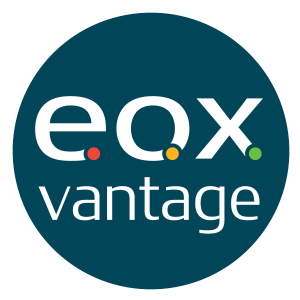Acronyms pop up all over in business and can really get confusing when talking about different ideas and concepts quickly with someone when there are so many.
For example, if someone asked, "Can we integrate AI into the CRM system to increase CX?" or even "How can we leverage BI and RPA to meet the KPIs and ensure QC?" Hopefully, the other person would know what the conversation is about and how to answer it or where to guide those questions to be asked to the correct person.
Here are our top 25 common acronyms broken down to bring clarity to those conversations, so no one leaves thinking, "What did they just say?"
-
AI (Artificial Intelligence): Computer systems that have the ability to do tasks that usually require human intelligence. An example of AI would be an AI-powered chatbot that provides customer support.
- API (Application Programming Interface): A set of protocols and rules which enable software applications to interact and "talk" to each other. For example, an API would be responsible for allowing website developers to integrate a payment system or software into an e-commerce website.
- BI (Business Intelligence): The process of collecting, analyzing and reporting data to make informed decisions. An example of BI would include a tool that can generate graphs, dashboards and reports tracking a company's sales performance.
- BPO (Business Process Outsource): Contracting specific business tasks or processes to an external service provider. For example, a company may outsource its call center to another company to maintain the process or tasks.
- CRM (Customer Relationship Management): A system and strategy used to manage and nurture customer relationships, track interactions and overall improve customer satisfaction and retention. For example, a CRM platform stores data..... JENN
- CX (Customer Experience): The satisfaction and perception a customer has with a company throughout their interactions and customer journey. An example of customer experience would be improving a company website to include online customer support.
- DB (Database): An organized collection of data that is organized and managed that allows for easy retrieval and filtering. An example of the database would be historical and present records of inventory.
- DMS (Document Management System): A solution provided by the software to organize, manage and store documentation or files. An example of a DMS would be to store and retrieve customer invoices.
- EOS (Enterprise Operating System): A system that integrates with multiple departments and platforms used throughout a company. For example, an EOS system would connect operations, human resources and sales to streamline cross-functional collaboration.
- HRMS (Human Resource Management System): software designed to manage employee-related processes and documents. An example of HRMS would be a platform new employees use for onboarding to understand company policies and expectations.
- IMS (Inventory Management System): A software that is used to track, manage and optimize inventory levels and supply chain processes. An example of implementing IMS would be a warehouse having visibility to all inventory levels to be able to see them in one place easily and reorder products as needed.
- IoT (Internet of Things): A network of different devices that have monitors or are collecting data that can "talk" to each other allowing for them to seamlessly and automatically transfer data over the internet. An example of IoT would be any smart home device that could be controlled from a cell phone.
- KPI (Key Performance Indicators): A measurable value that a company tracks to evaluate the performance or success of a department, project or goal. An example of a KPI that may be used is the customer satisfaction rate for customer service.
- OCR (Optical Character Recognition): A type of AI technology that converts text that is printed or handwritten into text that is editable and searchable data. An example of using OCR is to extract text from handwritten forms into a database.
- OI (Operational Intelligence): The use of real-time data and analytics to provide insights into a company's operational processes and performance to make data-driven decisions. An example of OI is monitoring the production of a factory to identify any areas that need to be focused on to optimize the manufacturing process.
- QA (Quality Assurance): The process of ensuring that products, services, or processes meet specified standards. An example of quality assurance is testing software for bugs prior to launch.
- QC (Quality Control): The process of verifying services or products are meeting requirements during or after production. An example of QC is manufactured goods being inspected to make sure they are meeting the size requirements.
- QMS (Quality Management System): A set of processes, procedures and policies that are in place to manage and improve the quality of the product, service or within an organization. An example of QMS is to document goals and audits and to track corrective actions.
- ROI (Return on Investment): A measure of the overall value or profit gained from an investment compared to the cost. An example of ROI is measuring how much was spent on advertising and the sales that were made that came from advertising.
- RPA (Robotic Process Automation): The use of software or bots that automate repetitive and rule-based processes. An example of using RPA is processing form submissions and inputting the information into different databases.
- SaaS (Software as a Service): A software that is hosted and accessed through the internet. An example of SaaS is a cloud-based system used for a team department or company for project management.
- SCM (Supply Chain Management): the management of a product or service from the beginning of creating the product to meeting the end consumer to optimize and meet the customer demand. an example of SCM would be coordinating the sourcing, production and distribution of the product to the customer in a timely delivery.
- SEO (Search Engine Optimization): The process of optimizing the website or a single web page to improve the ranking and visibility on different search engine results. An example of SEO would be optimizing the website content including backlinks, meta tags and more to increase organic traffic and awareness.
- SQE (Software Quality Engineer): A professional that is responsible for the quality and reliability of different software products through research, testing, analysis and continuous improvement processes. An example of what an SQE would do is to run an analysis to detect any current or potential software issues.
- TQM (Total Quality Management): A management strategy that focuses on continuous improvement, employee involvement and customer satisfaction to achieve high-quality products or services. An example of implementing TQM principles could be reducing defects and increasing customer satisfaction rate.
As a software company, these are common acronyms we use and also see across multiple industries being implemented to help streamline processes of company operations internally to perform as competitively as possible. If your company is looking for more than one of these solutions, reach out to us today to discuss our EOS software system! We can integrate over 300 already existing software platforms to pull them into one place, create custom customer or employee portals, and more!


